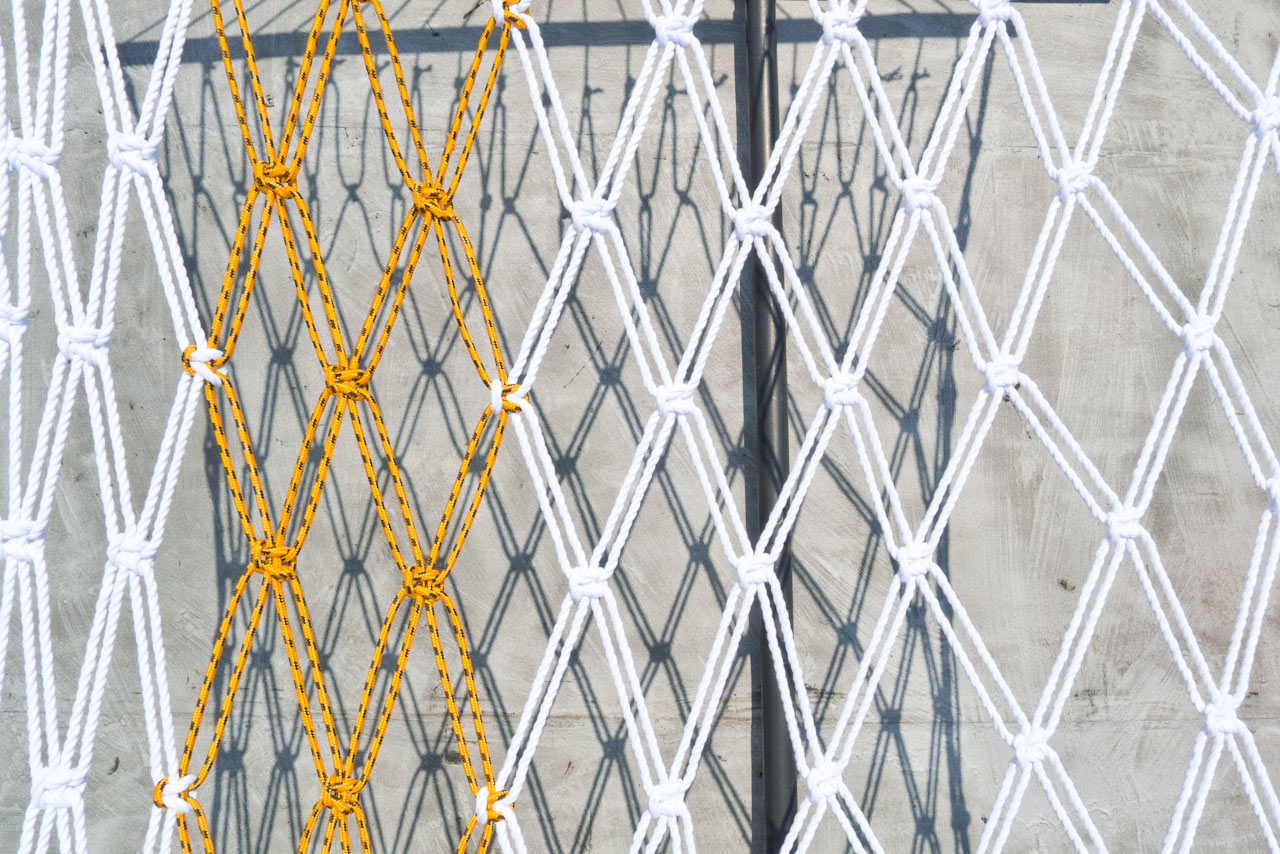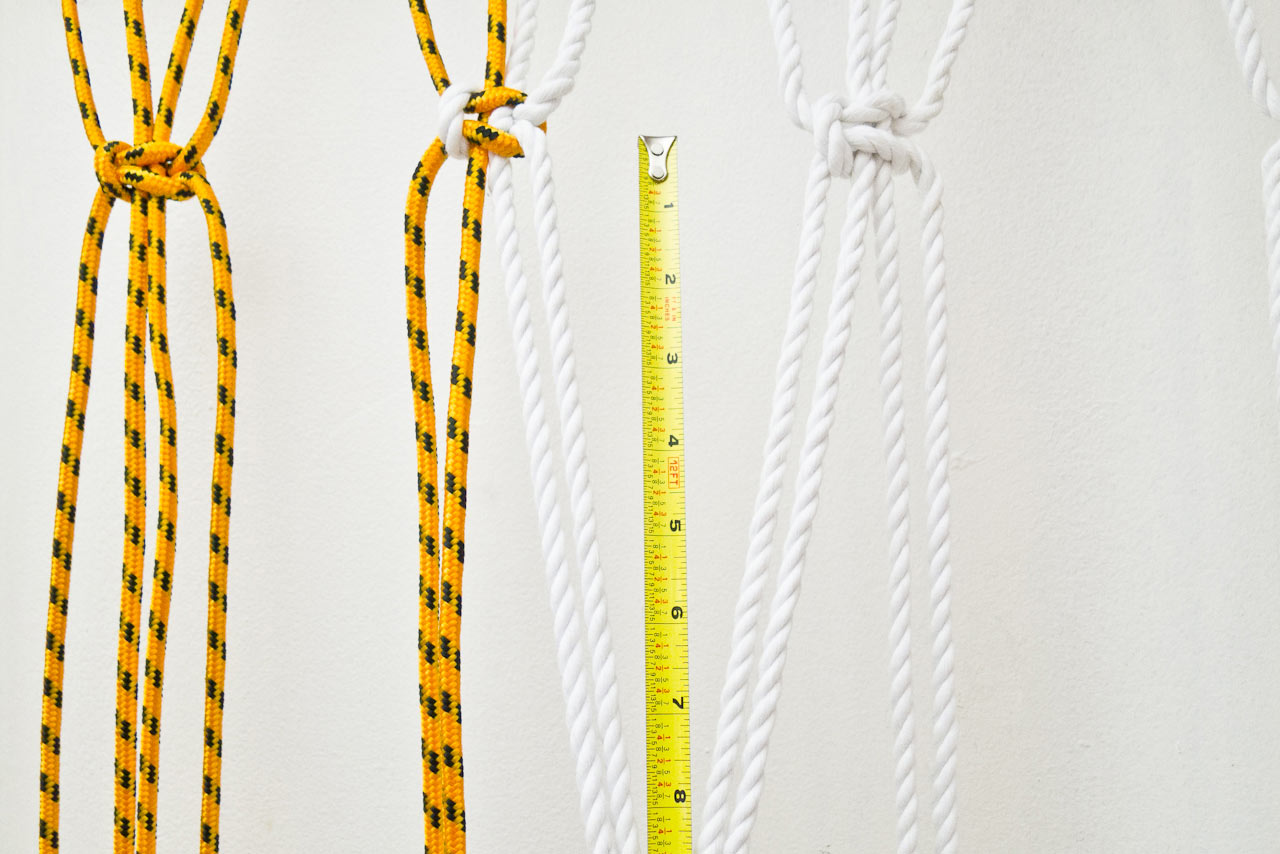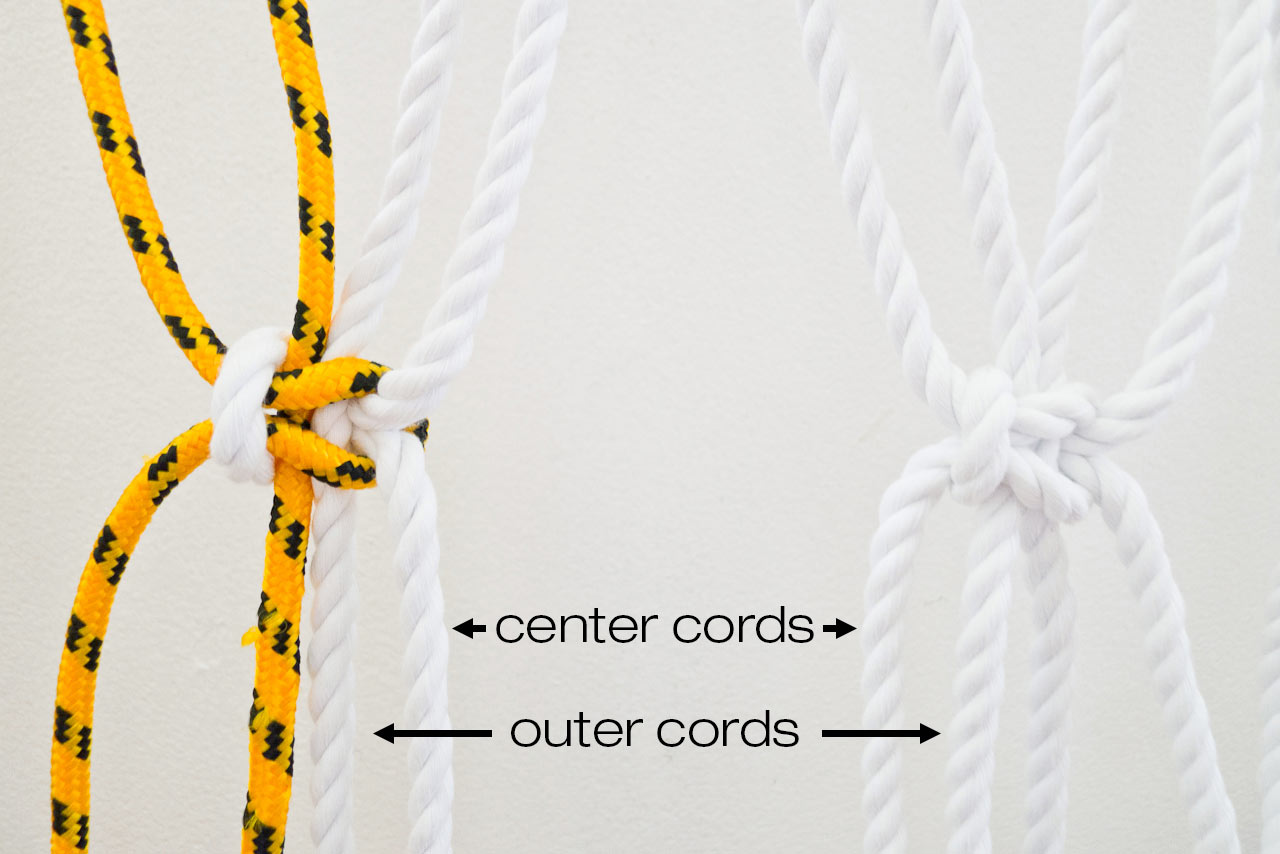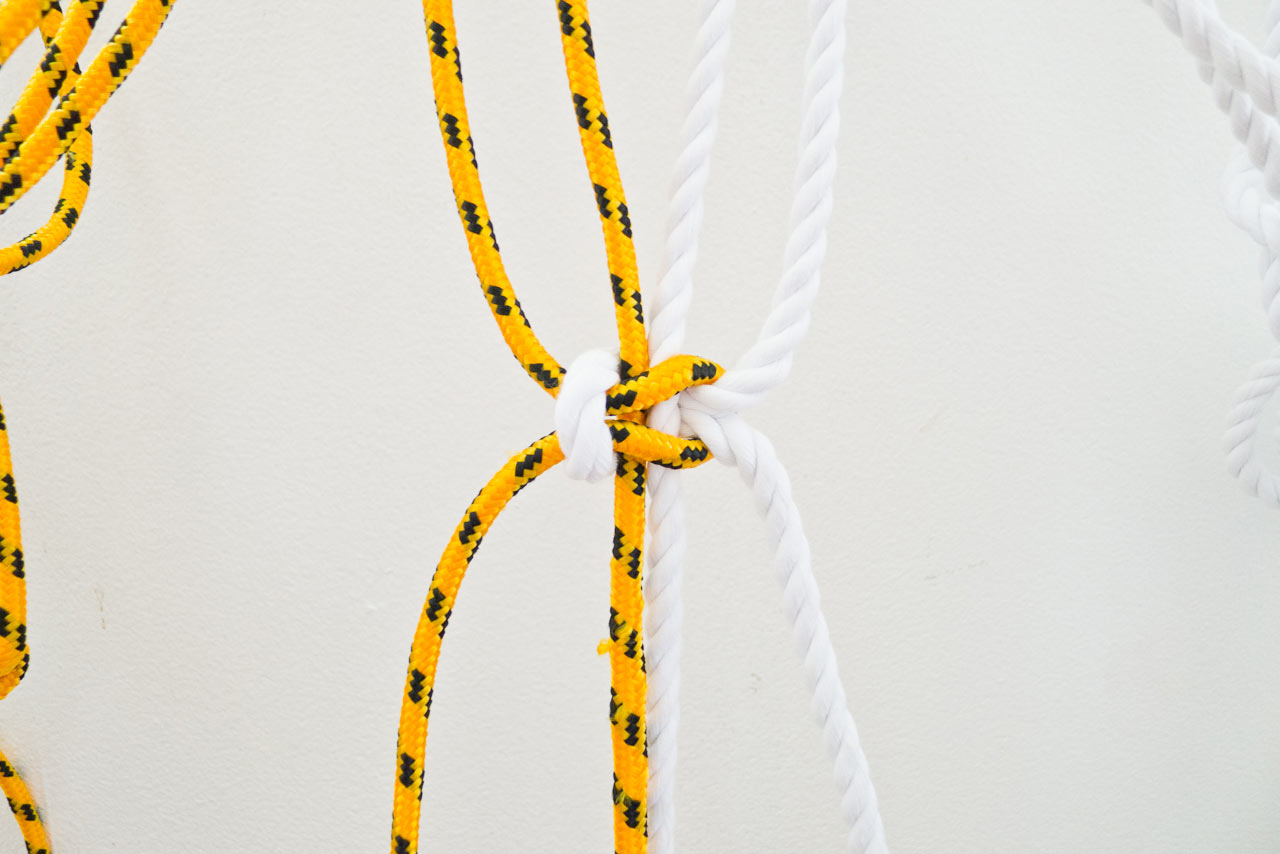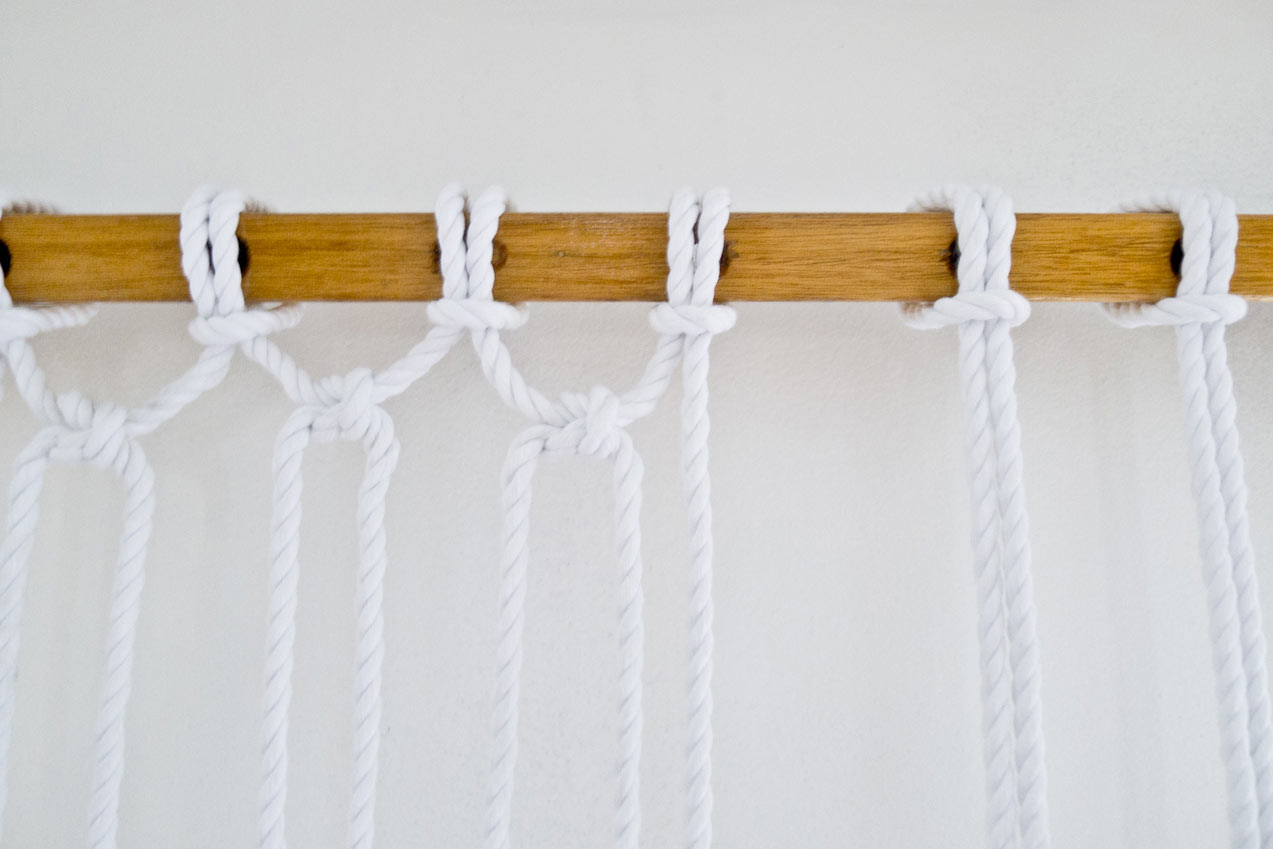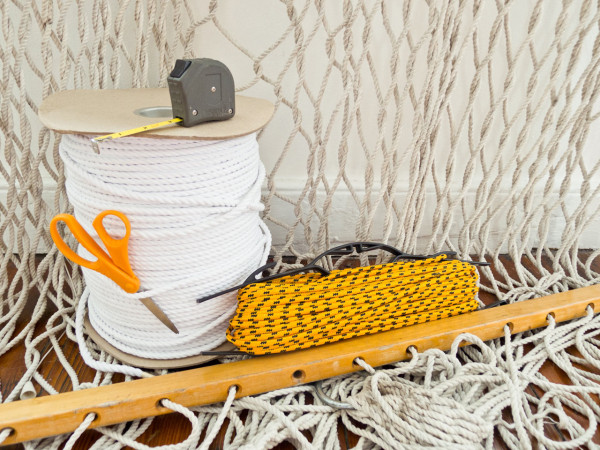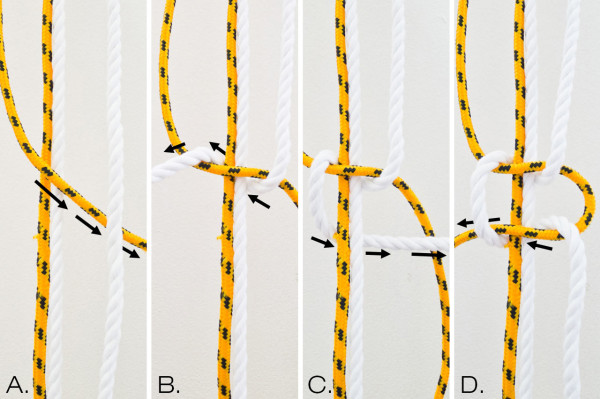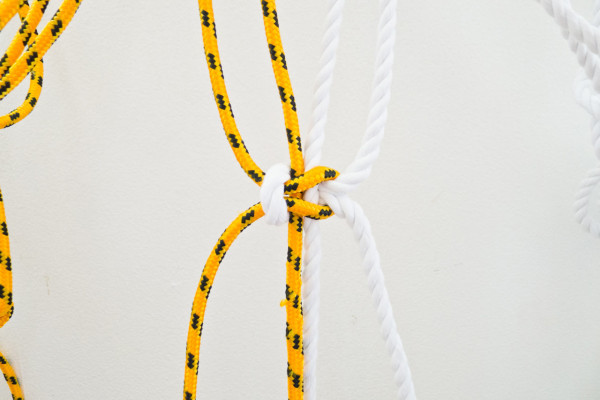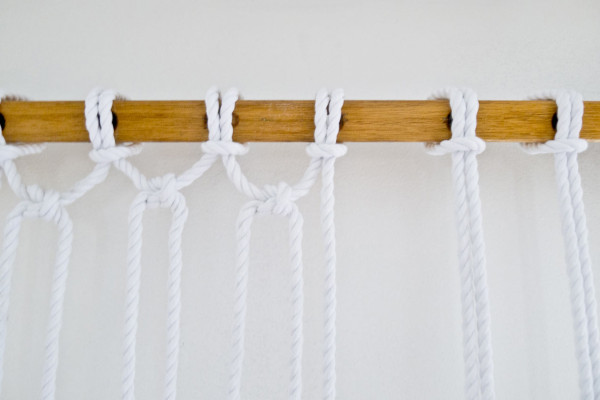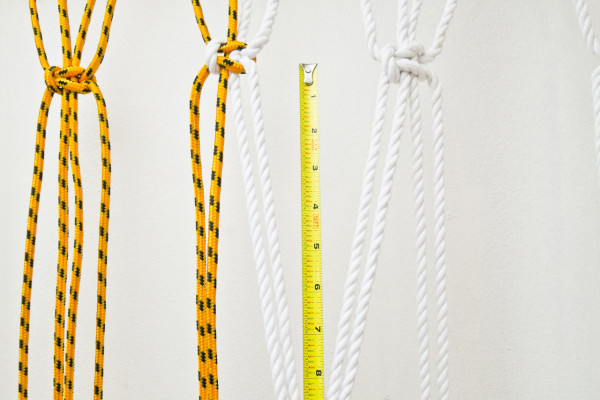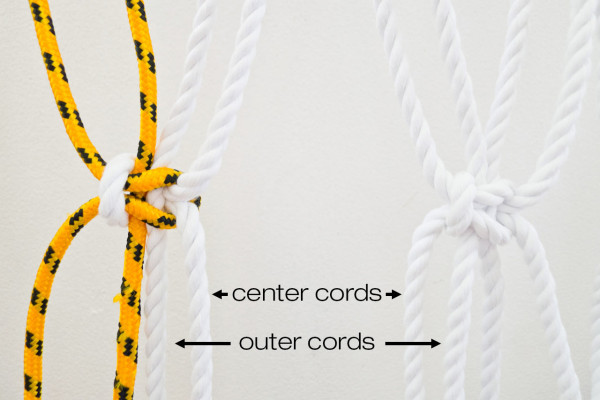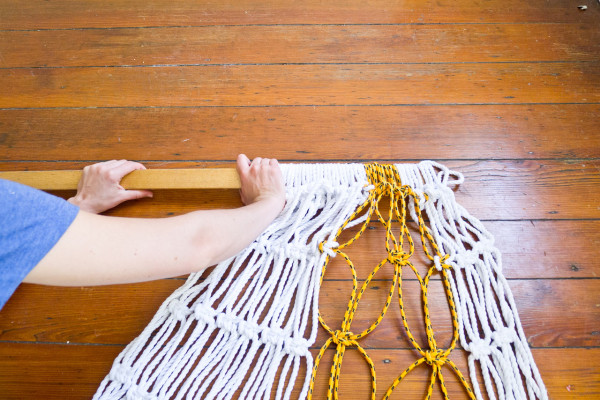This might be the perfect summer project. Weaving is an amazing way to relax. The repetition and handiwork are incredibly cathartic—and when you’re done, you’ve made a place in which you can lay back and lounge.
That said, when you’re making things on your own, it’s easy to get caught up on what you don’t have instead of embracing what you do. When I started this project, I fell into that trap: I didn’t have enough room to weave something so large, I couldn’t mount hooks in my brick and plaster walls, and there was no way I could carve the time out of my schedule to do something as time-intensive as weaving. Still, I was intent on working with the massive amount of rope I’d acquired, so I just went ahead and swung into the project I had in mind… and it worked! The supposed limitations of my workspace sorted themselves out, and it took far, far less time than I assumed—just a nice, lazy afternoon.
This particular geometric pattern holds better than a traditional hammock weave, and the sail rope adds a nice touch of nautical contrast.
For a 6’ hammock, you’ll need:
Supplies:
– 1000 ft skein of hammock rope
– 100 ft sailing rope in a contrasting color
– 5’ long dowel or bar, about 1” wide
– scissors or utility knife
– masking tape
– measuring tape
– 2 large wall hooks (see below)
– Epoxy (optional)
PREP
Step 1: Mount the wall hooks about 7’ off the ground, and lay the bar between them. If you’re in a pinch, like I was, you can prop the bar between two curtain rods, hang it from the ceiling – anywhere that will let the rope hang.
Step 2: Measure 17 lengths of hammock rope and 4 lengths of sailing rope, each 24’ long. To keep the rope from fraying, I found it easiest to tape the point at which I was going to cut the rope, and then cut the small taped section in half.
Step 3: Fold each length of rope in half, loop it over the bar, and pull it back through itself (technically, this is a cow hitch). I offset the group of sail rope lengths a bit from the center, for visual interest.
WEAVING
For this part, all you really need to know is how to tie an alternating square knot:
A. Cross the left cord (yellow) over the two center cords, and under the right cord.
B. Take the right cord (white) behind the center cords, and up through the hole, over the left cord.
C. Take left cord (white) behind the center cords, and over the right cord.
D. Cross the right cord (yellow) over the center cords, and then through the hole, behind the left cord.
Pull the knot taut, and you’re set.
After that, the pattern is pretty simple:
Step 1: Beginning somewhere in the middle, tie one leg of each looped cord to the cord next to it, using a plain square knot (the same as the alternating square knot, just without the center cords). Tie a row of these across the top.
Step 2: Then, begin the alternating square knots. Again, somewhere in the middle, hold two sets of legs from two adjacent looped cords. About 6” down from your first row of knots, use these 4 legs to tie an alternating square knot. Do an entire horizontal row of these.
Step 3: Now, move another 6” down, and switch the center cords to be twice-removed from the knot above:
Do an entire row of these, and switch back to the cords in Step 2, repeating Steps 2 and 3 for the remainder of the hammock.
Once you get into a groove, this goes really quickly. When I reached the edge and had cord that wasn’t tied in, I just wrapped it through the nearest knotted cord once or twice.
Step 4: Work your way down by tying off rows of alternating square knots until you’re about 1’ from the end of your cords. At this point, tie off a plain square knot, the same way you did when you began. Alternate from the tied cords and do one last knot to create your final loops, to mirror the beginning of the weaving.
Step 5: Take down the bar, push off your loops, cut off any extra cord, and that’s about it. If you want, you can add a bit of epoxy to the end of each cord to keep from fraying.
When it comes to mounting the hammock, there are as many options as there are trees. I had a hammock clew left from a broken hammock, so I was able to tie off each of the ends through my old hammock bar, but I found a great tutorial here if you’re into taking the extra steps. Another option is to draw more rope or chain through the top and bottom loops, and secure that between a couple of trees or posts.
This same technique with a bit less space between the knots (about 3″ instead of 6″) creates a cool pattern of overlapping circles, which would be great for an outdoor rug or an airy summer curtain.
Now go take that nap you so deserve.


